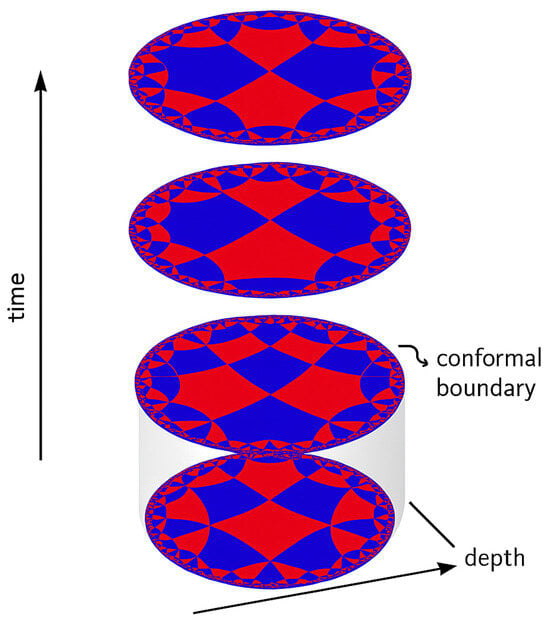- Feature Paper
- Article
Curved Geometries in Persistent Homology: From Euclidean to AdS Metrics in Bow Echo Dynamics
- Hélène Canot,
- Philippe Durand and
- Emmanuel Frenod
We propose a geometry topological framework to analyze storm dynamics by coupling persistent homology with Anti-de Sitter (AdS)-inspired metrics. On radar images of a bow echo event, we compare Euclidean distance with three compressive AdS metrics ( = 0.01, 0.1, 0.3) via time-resolved persistence diagrams for the arc and its internal cells. The moderate curvature setting () offers the best trade-off: it suppresses spurious cycles, preserves salient features, and stabilizes lifetime distributions. Consistently, the arc exhibits longer, more dispersed cycles (large-scale organizer), while cells show shorter, localized patterns (confined convection). Cross-correlations of lifetimes reveal a temporal asymmetry: arc activation precedes cell activation. A differential indicator based on Wasserstein distances quantifies this divergence and aligns with the visual onset in radar, suggesting early warning potential. Results are demonstrated on a rapid Corsica bow echo; broader validation remains future work.
4 November 2025


